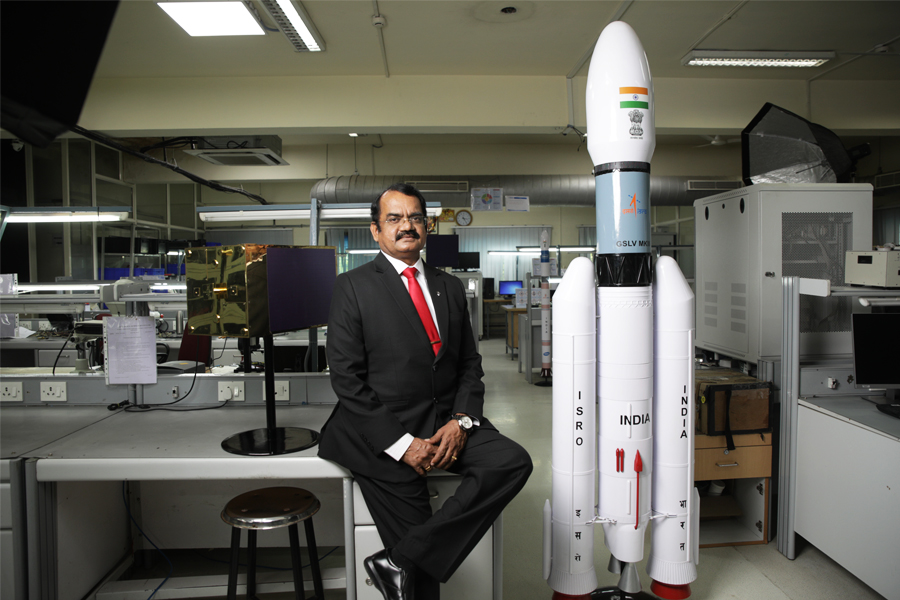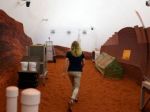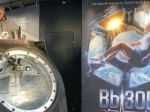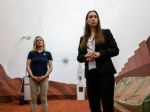
Man can make Moon and Mars habitable planets: Mylswamy Annadurai
The Moon Man of India on new opportunities for space tech entrepreneurs, the possibility of human colonies on the Moon and Mars, and the likelihood of life in the Universe
 Mylswamy Annadurai, former director at the ISRO Satellite Centre
Image: Selvaprakash Lakshmanan for Forbes India
Mylswamy Annadurai, former director at the ISRO Satellite Centre
Image: Selvaprakash Lakshmanan for Forbes India
A world-renowned space scientist, fondly known as the Moon Man of India, Mylswamy Annadurai, former director at the ISRO Satellite Centre, led iconic space missions like Chandrayaan 1, Mangalyaan, and Chandrayaan 2, and paved the way for India to join the ranks of space-faring nations. Annadurai's team at ISRO changed the course of space research with the revolutionary discovery of water on the Moon and the successful launch of a mission to Mars in the first attempt. In an exclusive conversation on Forbes India Pathbreakers, Annadurai talks on a range of issues including opportunities for space tech entrepreneurs, the possibility of human colonies on the Moon and Mars, the discovery of exoplanets, and the likelihood of life in the Universe. Edited excerpts from the conversation:
Getting started
Annadurai says ISRO was taking baby steps in space exploration when he joined in 1982. “We were launching satellites, and we got thinking about what more we can do. I scribbled a note on software satellite simulator just a few weeks after joining. Our director, Prof UR Rao, in a matter of two days gave us the green light provided I was ready to take the responsibility for it and complete the project with the given resources. With this I got my next promotion. That’s how we started with very modest baby steps. With each step we found the courage to step beyond,” he recalls.A pathbreaking discovery
The first challenging mission was Chandrayaan 1. “Though we were the seventieth mission to go to the Moon we made a pathbreaking discovery of water on the Moon. Between Chandrayaan 1 and Chandrayaan 2 there were some setbacks in the progress of our projects,” Annadurai recounts. “There was a need for course correction. We had a good amount of hardware for the Moon mission. Then we had a freak idea if we could take a similar path for Mars. That was just a spark of an idea.”However, the space scientist points out, many developed countries like USA, Russia, Japan, and Europe had attempted this in the past. To execute the idea, the team at ISRO would have to rejig the hardware developed for a mission to the Moon to go to Mars instead.
“This was a tall order requirement and the time available from start to finish was only 14 months. From time to budget to technology it was a tall order. We took this challenge and when we launched the mission in September 2014, we became the first country to successfully launch a satellite in the Mars orbit in our first attempt and under very modest circumstances. This re-triggered the imagination of Indians and other countries also looked up to us. This helped us launch a good number of satellites commercially for other countries. In this way Chandrayaan and Mangalyaan missions gave a face to India’s space programme and gave India’s youth the belief that this can be done in the country,” he reminisces.
Space and geopolitics
Countries are aggressively investing in space exploration to tilt the balance of power. For example, China’s space programme broke its previous record when a Long March 2D rocket successfully launched 41 satellites in orbit on June 15. Recently, there were media reports of a mysterious Chinese spaceship landing after nine months in orbit on a secret mission.Annadurai says India has done reasonably well: “India could not reap the benefits of the Industrial Revolution. But we cannot lag behind in the Space Revolution as mere spectators. I can tell you India has been a pioneer in many ways in how space can be used as a vantage point and satellites used for navigation, weather predictions, security, natural resources. We are acknowledged world over for what we have managed to achieve with our budget. Space will play a role in the geopolitical order. Technologically, we are as good as any other country as far as space programmes are concerned.”
Space tech startups
Changes in government regulations are also opening up new opportunities for space tech entrepreneurs. “Their enthusiasm is good and they are also capable. But we need a vibrant ecosystem which can take these entrepreneurs and connect everyone for end-to-end solutions. Let everybody have a slice of the cake. The cake is very big. From making the satellite, testing it, launching it, and operating it post launch,” notes Annadurai based on his interaction with budding founders and CEOs.Besides ISRO, startups and several private players are eyeing an opportunity in the area of launching satellites. “If we are able to build an ecosystem in and around Kulasekarapattinam then we can launch satellites on demand for other nations as well. This is a very good opportunity for new startups. Gone are the days when you need to make a bigger satellite or launch vehicle. We are slowly phasing that out. Now everything is small and smarter,” Annadurai explains.
Annadurai points out that more than 3,000 satellites were launched in space in the last three years or so for global communication. Each satellite has a limited lifespan. “Once its life is over, we must be able to replace it at the earliest. To that end, we need small launch vehicles that are available on demand. For this we have a geographically good location in the southern part of India. It had a setback but we will soon come out of it. With that combination we will be able to give on-demand launch with 24 hours’ notice. This is theoretically possible,” Annadurai adds.
Also read: With Skyroot's $51 mln funding, Indian space tech startups seek new orbit
Human colonies on Mars
Mankind was confident of human colonies on the Moon after Neil Armstrong and Buzz Aldrin landed Apollo 11 on the Moon in July 1969. Over five decades later the fascination continues. Elon Musk wants to make inter-planetary space travel a reality. “We have explored beyond seas and now we are exploring beyond space. Extended Earth is Moon and extended Moon and Earth is Mars,” says Annadurai, “Mars is more hospitable than Antarctica. Cultivating crops in Antarctica is very tough but this is not totally ruled out on Mars. I feel it is easier to maintain a station on Mars versus Antarctica.”But how can humans live on Moon and Mars without oxygen? “The discovery of water on Moon means a lot more things can be done there. The presence of water and hydrogen open up possibilities. For example, we have the next generation of nuclear-based systems coming up, so helium can be sourced from the Moon. Mars is reasonably conducive and technologically we can make it better. Man can make Moon and Mars habitable planets if required,” Annadurai explains. “Many pulses are being tested for cultivation in a Moon-like environment.”
Also read: Life on Mars: How our homes would look on the red planet
Annadurai adds, “Entering Moon and Mars is also possible. Travelling to Mars takes nine to ten months. Going to Mars is not difficult. The challenge is how to return to Earth. As per today’s technology that is not possible. However, a good number of youngsters were ready to go to Mars on a one-way trip. To and from Mars can be possible in the future but for that someone has to first go to Mars.”
Now, one wonders if reported UFO sightings and encounters with aliens are true or imaginary? Annadurai answers, “As of now whatever has been reported as seen, science cannot confirm but we cannot totally rule it out either. Once upon a time we believed that there is no water on the Moon. But now we have discovered water on the Moon. We have seen exoplanets. But there is a question mark on the possibility of other life forms. Just as life evolved on Earth, elsewhere also similar opportunities may be possible. The probability exists. As of now we haven’t seen them, [that] does not mean that they don’t exist.”


















